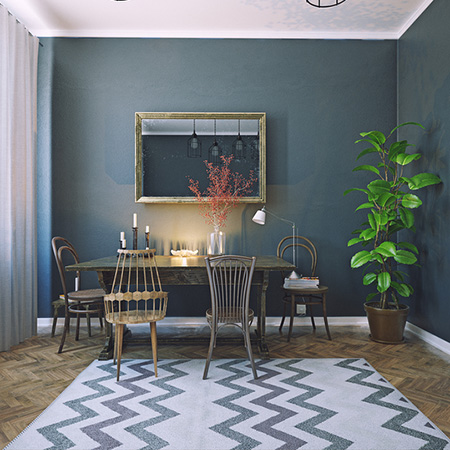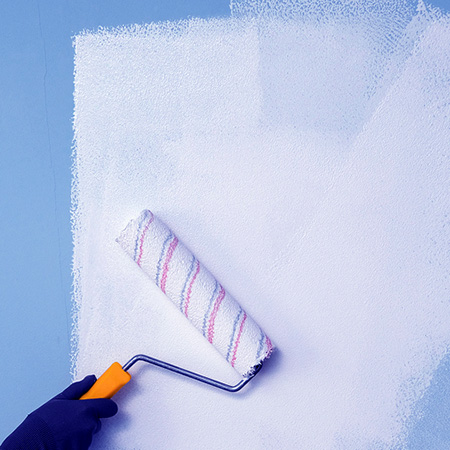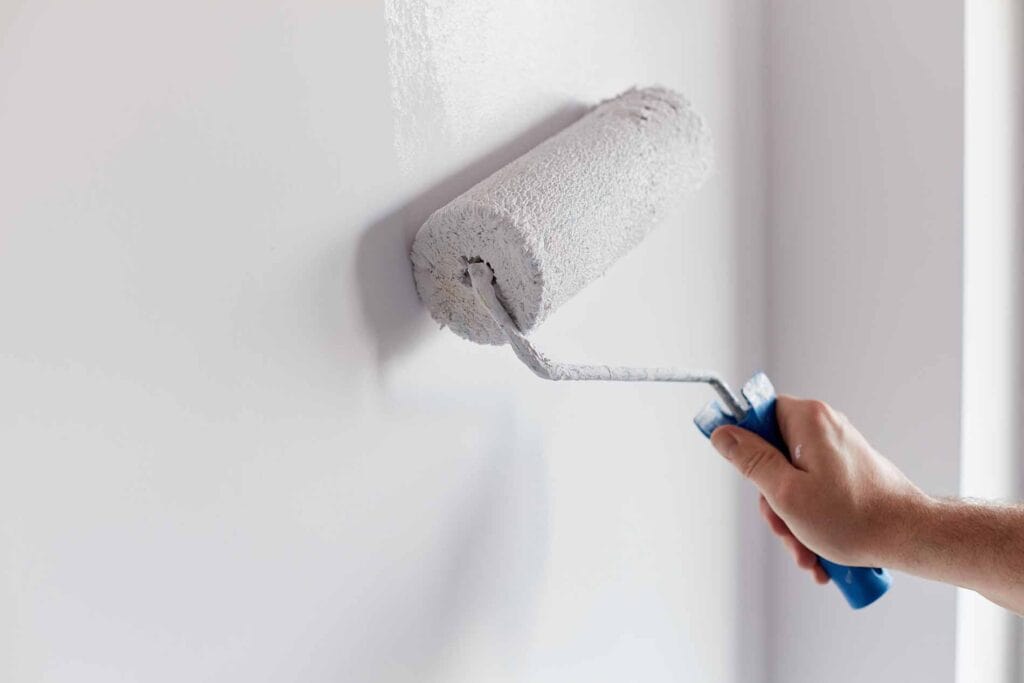 If you’ve ever had trouble producing a good result when painting a light color over dark-colored walls, the only problem may have been that you didn’t take the proper steps. Here’s how to ensure your next light-over-dark painting project meets – or exceeds – your expectations.
If you’ve ever had trouble producing a good result when painting a light color over dark-colored walls, the only problem may have been that you didn’t take the proper steps. Here’s how to ensure your next light-over-dark painting project meets – or exceeds – your expectations.
1. Good equipment
The quality of your brushes and rollers will play a big role in how nice your painted areas turn out. Let a pro at your local paint store advise you on the ideal types of brushes for your job. Aim for medium-priced or higher brushes, and never buy from the bargain bin. As for rollers, buy ones with the right-sized nap for your project—rough surfaces need a thicker nap, and smooth surfaces need a thinner nap.
After securing the right tools, focus on the best practices for applying paint, especially when painting one wall a dark shade or transitioning from a dark to a light color. For covering dark paint with a lighter color, it’s advisable to apply a quality primer—the best one can significantly reduce the number of topcoat layers needed. Experts often recommend at least two coats of primer followed by two to three coats of the new color to ensure an opaque finish. When painting light colors over dark walls, patience is key. Allow each coat to dry thoroughly before applying the next, ensuring even coverage and preventing the dark base color from bleeding through. This approach, combined with high-quality materials, paves the way for a stunning transformation of your space.
2. Quality paint and primer
Quality acrylic paint will do the job well for most interior wall or ceiling painting projects. Avoid off-brands and aim for brands with solid reputations, such as Benjamin Moore or Sherwin-Williams.
The right kind of primer is critical when painting over a darker color. You want a primer with high amounts of binders and pigment, as these block out the color underneath. When going from dark to light, a white primer will produce a better result than a gray or darker primer.
The primer selection becomes even more critical when considering how to paint a light color over a dark wall. Opt for the best primer to cover dark paint, as it lays the foundation for a smooth transition and reduces the number of topcoats needed. Typically, you need two to three coats of paint to cover dark paint thoroughly. If you paint one wall a dark shade as a feature or accent, remember that dark colors might also require multiple layers for an even, saturated finish. For those painting light colour over dark, or vice versa, patience and thorough preparation is key. Ensure each layer is fully dry before applying the next, and always follow the manufacturer’s recommendations on drying times. This meticulous approach ensures the vibrant finish you aim for, without the dark undercoat peeking through.
3. Do the prep
Even if you’re painting white over white, neglecting to prepare the surface properly is asking for trouble. Prep work is even more important when painting light over dark. Here’s what to do:
- Wipe surfaces entirely with a microfiber cloth to remove dust
- Use a detergent cleaner and rag on stains and smudges
- Scrape off any chipped or peeling old paint and sand well
- If a liquid cleaner is used, allow the surface to dry completely before starting to paint
4. Several primer coats
With most paint projects, a single coat of primer is usually sufficient. When using a primer to block out a dark color, two coats of primer will give you the added protection you need. Don’t scrimp on either coat – lay it on thick for the best results. Give each coat plenty of time to dry before doing anything else to the surfaces.
Once the primer is thoroughly dry, it’s time to select the right paint for your project. For those looking to paint one wall a dark shade as an accent, choosing high-quality paint with excellent coverage can minimize the work required. When painting a light color over a dark wall, the challenge increases but can be managed with the best paint to cover dark walls, designed for superior hiding power. Expect to apply multiple coats—often two to three—to fully obscure the darker base color, ensuring each coat is completely dry before adding the next. This process, while time-consuming, is crucial for achieving a seamless and vibrant finish. Additionally, tips for painting dark colors on walls include keeping a wet edge to avoid lap marks and reinforcing the importance of patience and precision in all painting projects.
 A few painting tips
A few painting tips
To make your work look great, use the following techniques the pros use:
- Place tape along the edges of any surface you don’t want paint on
- Cut in the painting surfaces with a three-inch-wide layer of paint around their perimeters
- Roll on primer and paint with smooth, easy strokes, making M or W shapes as you move along
- Avoid slinging paint by not overloading the roller
- For brushwork, make it easier by painting from a small plastic paint bucket, not from a bulky can
- If your project calls for more than a gallon of paint, combine all the gallons in a five-gallon bucket to ensure that every area painted will have the same shade (paints can have slight shade variants from one can to the next)
- Keep the room you’re painting in as well-ventilated as possible.
When tackling the challenge of how to paint over dark colors, it’s crucial to select the best paint primer to cover dark colors. A high-quality primer is your best ally in this endeavor, as it can significantly minimize the required topcoats. This step is especially important when painting over colored walls or specifically when you’re dealing with painting over a black wall. Primers designed for high coverage ensure your new light color will pop without the dark base affecting its hue.
For those wondering how to paint light color over dark color acrylic or lamenting, “Help, I painted my walls too dark,” the process begins with thoroughly applying this primer. Follow the primer with your chosen light paint, applying it in several thin layers rather than one thick coat. This technique allows for better drying and a more even application, essential when painting white over dark walls.
If you’re asking, can you paint white over blue or how to paint over dark grey walls, the answer is yes, but patience and suitable materials are key. Opting for the best paint to go over dark colors involves choosing paints with high opacity and excellent coverage. These products are formulated to provide the best results when painting light over dark colors.
Lastly, for those curious about how to paint light colors over dark walls, remember that the transition might require more coats than usual. However, following these steps and using quality products makes achieving a beautiful, even finish over dark walls possible. The transformation from dark to light can be dramatic, refreshing your space with a new look.
Franklin Painting of Farmington, CT, can help you with any interior or exterior painting project. If you’re not really into doing it yourself but still want excellent results, count on our professional crew to deliver—call (877) 646-7774 with questions or to arrange an appointment.

